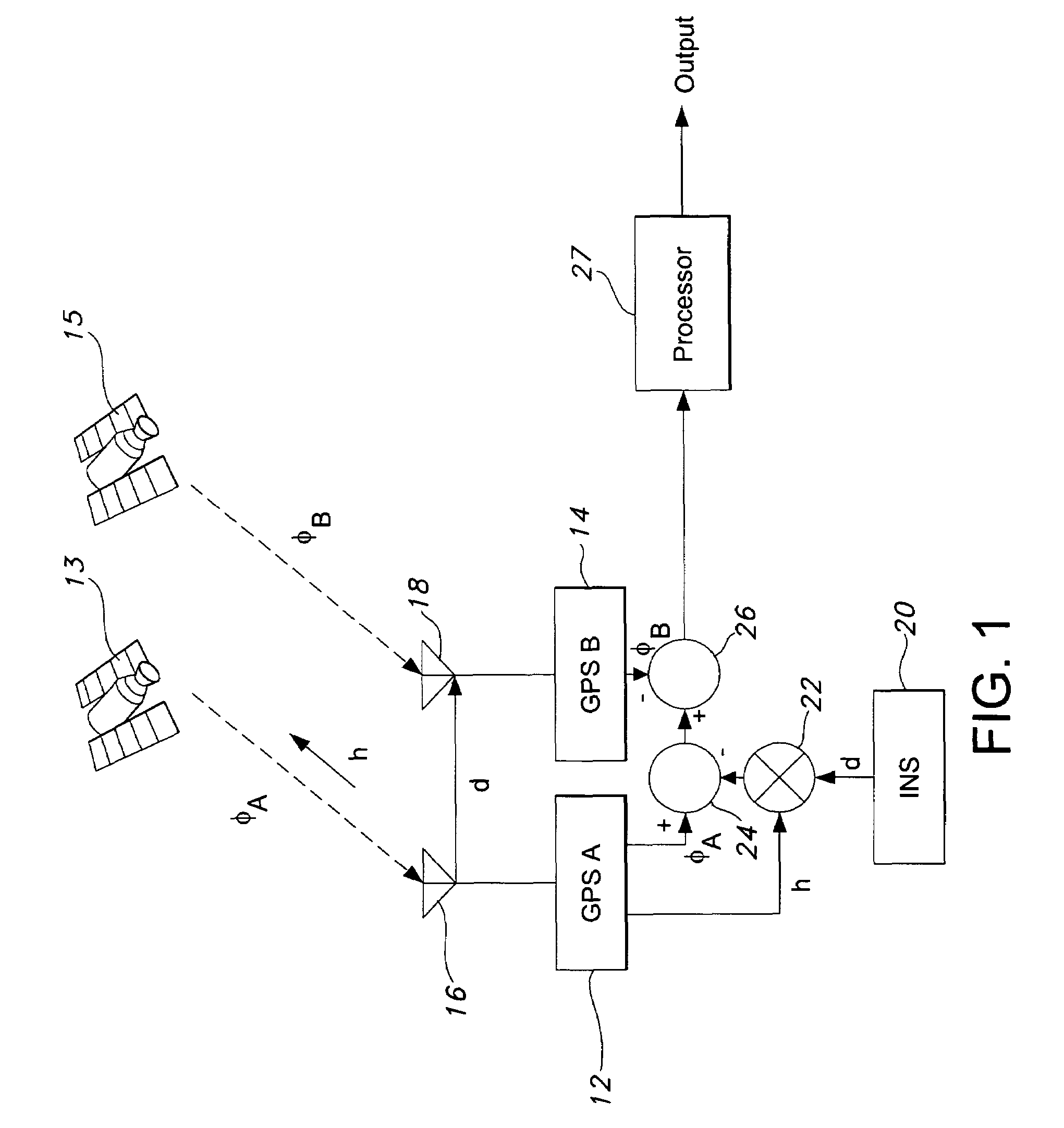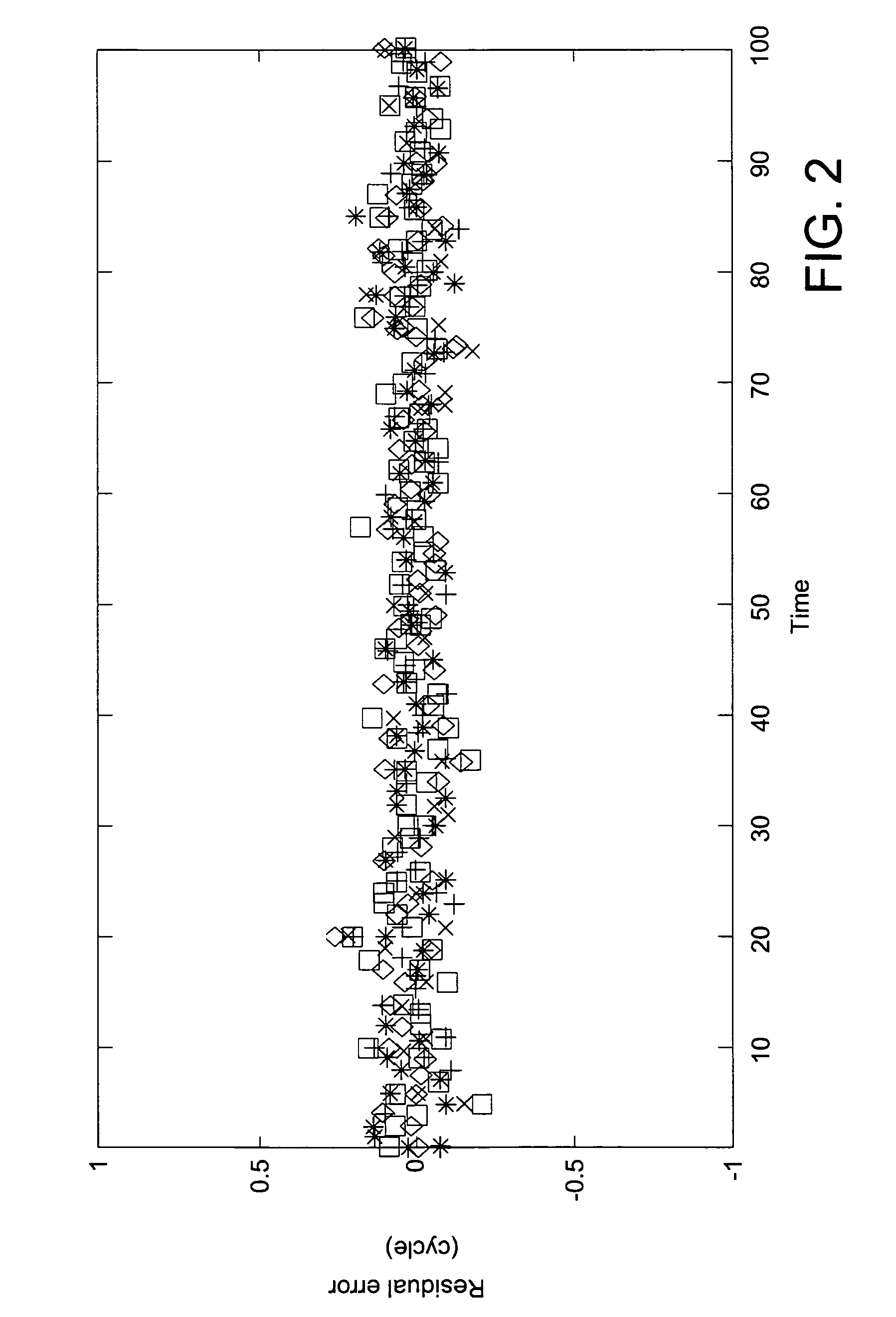Dual antenna diversity method to detect GPS signal tampering
a technology of gps signal tampering and diversity, applied in the field of global positioning system (gps), gps receiver, method of detecting gps signal tampering, can solve the problems that gps signal tampering can pose a significant threat, and achieve the effect of robustness
- Summary
- Abstract
- Description
- Claims
- Application Information
AI Technical Summary
Benefits of technology
Problems solved by technology
Method used
Image
Examples
Embodiment Construction
[0022]The present invention is for a dual antenna diversity solution to protect against GPS signal tampering. While the present invention is described below as applicable to the GPS system it is within the scope of the present invention to cover other present and future GNSS systems.
[0023]FIG. 1 shows two GPS receivers, GPS A 12 and GPS B 14, connected to antennas 16 and 18 respectively and tracking a first GPS satellite 13 to make direct signal measurements of carrier phase φ. The first receiver 12 provides a first carrier phase measurement φA and a direction cosine vector h to the first GPS satellite 13. The second receiver 14 provides a second carrier phase measurement φB. An independent means may be used to determine a baseline vector, d, between the first antenna 16 and the second antenna 18 such as an inertial sensor 20.
[0024]When the two GPS receivers, GPS A 12 and GPS B 14, are independently tracking the same satellite signal and the baseline vector, d, adjoining their anten...
PUM
 Login to View More
Login to View More Abstract
Description
Claims
Application Information
 Login to View More
Login to View More - R&D
- Intellectual Property
- Life Sciences
- Materials
- Tech Scout
- Unparalleled Data Quality
- Higher Quality Content
- 60% Fewer Hallucinations
Browse by: Latest US Patents, China's latest patents, Technical Efficacy Thesaurus, Application Domain, Technology Topic, Popular Technical Reports.
© 2025 PatSnap. All rights reserved.Legal|Privacy policy|Modern Slavery Act Transparency Statement|Sitemap|About US| Contact US: help@patsnap.com



